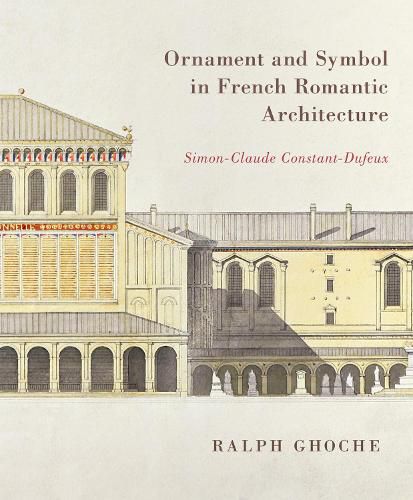Readings Newsletter
Become a Readings Member to make your shopping experience even easier.
Sign in or sign up for free!
You’re not far away from qualifying for FREE standard shipping within Australia
You’ve qualified for FREE standard shipping within Australia
The cart is loading…






For Simon-Claude Constant-Dufeux (1801-1871), a radical French architect and chair of perspective at the Ecole des Beaux-Arts in Paris, the study and composition of ornament were essential pursuits. Architectural emblems and ornaments were symbols that conveyed concise and immediate meaning; they were also a crucial element in realizing the Romantic ideal of the synthesis of the arts.
Through the lens of Constant-Dufeux's work, Ornament and Symbol in French Romantic Architecture explores the sudden proliferation of ornamental motifs in France, challenging the understanding that the twentieth-century modernist avant-garde developed in direct opposition to ornament. Ralph Ghoche examines architectural ornament from the July Monarchy to the Second Empire, revealing its connections to Romantic theories of symbolism and ideas about the power of form to elicit emotional responses. Ghoche repositions Constant-Dufeux as a pivotal figure in developing new forms of symbolic signification in architecture, establishing him as one of Romanticism's key theoreticians.
Ornament and Symbol in French Romantic Architecture reconstructs vibrant debates surrounding theories of the symbol, the public function of architecture, and the quest for the synthesis of the arts, revealing architectural ornamentation to be part of a process of modernization that continued into the next generation of architects and artists, ultimately culminating in the advent of art nouveau.
$9.00 standard shipping within Australia
FREE standard shipping within Australia for orders over $100.00
Express & International shipping calculated at checkout
For Simon-Claude Constant-Dufeux (1801-1871), a radical French architect and chair of perspective at the Ecole des Beaux-Arts in Paris, the study and composition of ornament were essential pursuits. Architectural emblems and ornaments were symbols that conveyed concise and immediate meaning; they were also a crucial element in realizing the Romantic ideal of the synthesis of the arts.
Through the lens of Constant-Dufeux's work, Ornament and Symbol in French Romantic Architecture explores the sudden proliferation of ornamental motifs in France, challenging the understanding that the twentieth-century modernist avant-garde developed in direct opposition to ornament. Ralph Ghoche examines architectural ornament from the July Monarchy to the Second Empire, revealing its connections to Romantic theories of symbolism and ideas about the power of form to elicit emotional responses. Ghoche repositions Constant-Dufeux as a pivotal figure in developing new forms of symbolic signification in architecture, establishing him as one of Romanticism's key theoreticians.
Ornament and Symbol in French Romantic Architecture reconstructs vibrant debates surrounding theories of the symbol, the public function of architecture, and the quest for the synthesis of the arts, revealing architectural ornamentation to be part of a process of modernization that continued into the next generation of architects and artists, ultimately culminating in the advent of art nouveau.